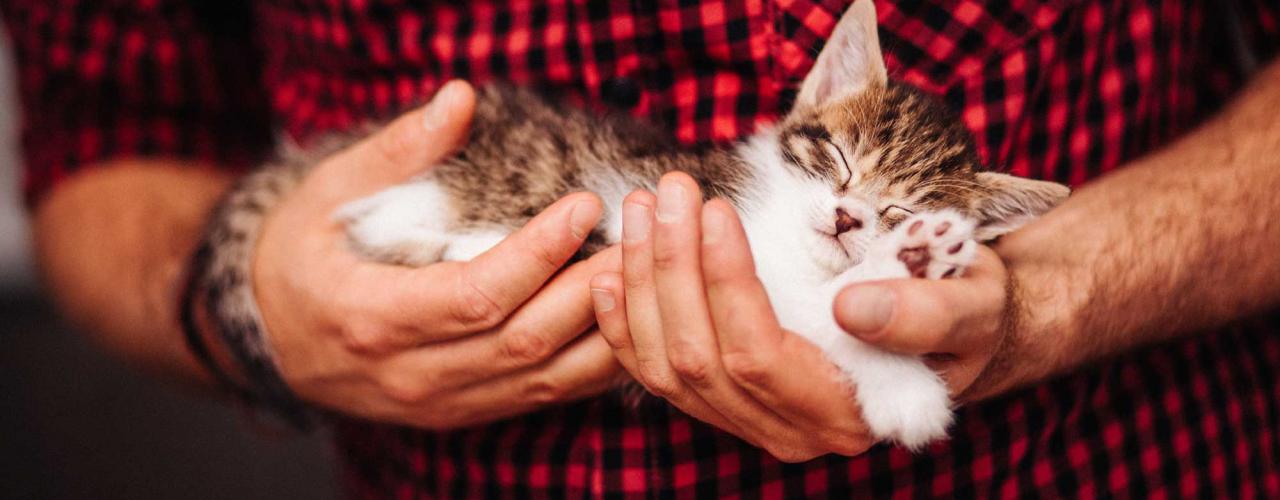

Felidae, the family to which all living cats belong, appeared about 10 to 11 million years ago. Domestication of the cat is a bit tricky to track, as the physical changes from their wild ancestors are less pronounced than dogs. However, cats have been found buried in close proximity to people on Cyprus from about 12,000 years ago. As there are no native cat species on the island that strongly suggests someone took them there and to be buried with them suggest more than a mistake!
Feline domestication seems a little more fortuitous than with dogs. General theory suggests middle eastern rodents quickly invaded communities, and cats followed them. They would quickly have been valued as being preferable to rats. If you accept the not universally condoned theory, that humans have a unique and innate tendency for pet keeping, it is likely this process would have been rapidly accelerated by human coercion.
From around 1950 BC there are pictorial representations of cats in Egyptian houses. These cats are almost certainly domesticated as they appear often on a lead, under the owner’s chair eating fish and the like. Although they are often incidental in the paintings, their frequent inclusion suggests they were very common place. Cats are also common in burial sites from around this time and on.
The Egyptians in fact had a particular predilection to keeping a diverse range of pets, which they viewed as the earthly representatives of gods and goddesses. The tom cat for example was one of the manifestations of the sun god Ra, who each evening battled with, and presumably lost to, the serpent of darkness. The Egyptians were very protective of their cats, and it was illegal to export them. They even had special agents who went into neighbouring Mediterranean countries to retrieve illegally exported animals.
On the local front it is well documented that cats preceded European settlement in Australia by several hundred years: presumed to have come aground from Dutch ship wrecks. Indigenous art, being layered (new versions on top of older versions), depict cats, then boats, then white people. Cats were in fact hunted for food by many language groups.
Cats in their natural environment are a solitary predator. They live in a territory of vastly variable dimensions varying from half a hectare to 150 hectares or more, in rural Australia. The size of their territory is determined by the availability of food for females, and for males the access to females. Cats generally live centrally in their territory coming to the boundaries to mate. For this reason, cats, vocalise or call, to attract a mate when they are on heat. This isolation appears to be as much a reaction to necessity, as a deep-felt desire to be solitary, as even wild cats appear to gravitate quite easily to communal living around plentiful food sources.
Now we all know cats bury their faeces, right? Well not completely. Cats bury their faeces around the ‘home paddock’ but will defecate quite openly in an apparent marking behaviour outside that zone. We should bear this in mind when assessing inappropriate toileting behaviour at home.
Another important behavioural aspect of the cat’s origins is drinking behaviour. Drinking in cats appears not to be primarily thirst driven but is opportunistic. If you live in a dessert there’s not much point being thirsty if there’s no water. Conversely if you see water you should drink it. Even if you aren’t thirsty! So, if you want your cat to drink more, put water where they walk and they will lap it as they walk past. In fact, cats are very protective of water sources and will often choose to eat away from water, so they don’t contaminate it. For that reason, joined water/food bowls may discourage cats from eating.
As a solitary predator cats have some other behavioural traits that are significant. Firstly, they mask pain (as do many prey species also). IF you are a communal predator, and you have a sore foot, limp so your mates look out for you. IF you’re an herbivore limp and the lion eats you. Cats assume that they are on their own, so mask signs of illness and hide when they are really sick. Contrary to myth they are not ‘crawling off to die’ but hiding in a desperate attempt not to get eaten whilst they try to recover.
Cats naturally live in protective alcoves such as hollowed out tree branches. This leaves them protected on three sides with a view of the world (In the Australia Bush with its often lack of trees they will live under a spinifex bush). They can then leap on an unwary mouse. So, if your cat is getting anxious at home, putting a box on top of a wardrobe that they can hide in, may make them feel better.
Overall, we need to treat all our various pet species with an eye to where they came from and how that may affect their behaviour. There are few universal rules, with what works for one species possibly being detrimental to another!